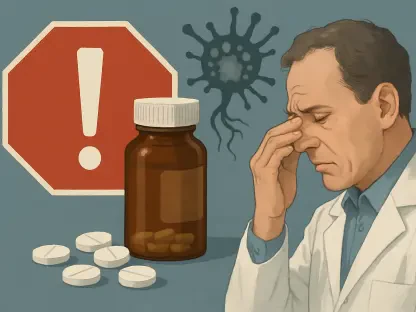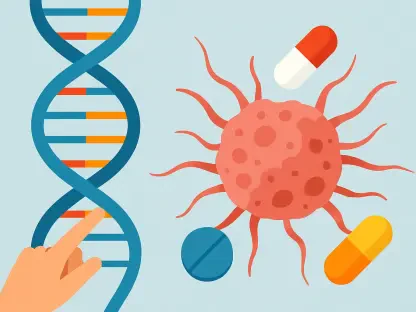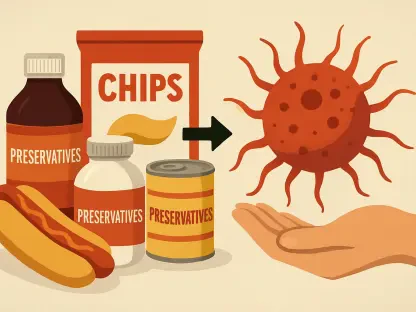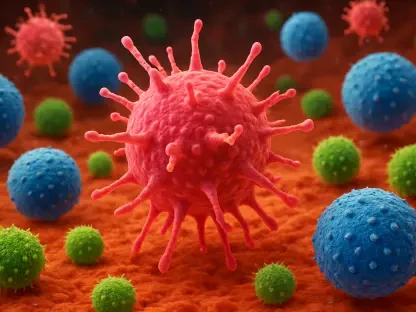The management of biohazardous waste in restrooms is an often overlooked, yet critical component of maintaining a safe and healthy environment, particularly in public facilities and healthcare settings. Every day, cleaning professionals face the significant risk of exposure to various bodily fluids, each a vector for harmful pathogens. From blood and urine to mucus and feces, these substances pose a real danger that mandates meticulous handling and disposal procedures. The nature of restrooms makes them prime venues for accidents involving these substances, despite continual efforts to maintain hygiene standards. Consequently, there is an urgent need for effective training, the use of appropriate protective equipment, and strict adherence to established protocols. As more cases of mismanagement can lead to heightened risks for employees and the general public, understanding and implementing safe disposal practices becomes indispensable.
1. Biohazard Risks in Restrooms
Restrooms, by their very function, are susceptible to the presence of various biohazardous substances, rendering them hotspots for potential contamination and infection. Cleaning teams are regularly exposed to biological fluids and agents, with toilets and urinals presenting the highest risk due to incidents like poor aim or vomiting. When cleaning professionals encounter these materials, they handle substances that might contain infectious agents such as HIV, hepatitis B, and hepatitis C. Beyond visible spills, even surfaces like toilet handles and floors can harbor pathogens, especially in cases of splashback. This underscores the importance of thorough handwashing and sanitization. The constant vigilance required to manage these risks demands well-developed safety protocols and an ongoing commitment to preventive measures. Recognizing that these everyday professionals stand on the front lines of maintaining hygiene standards, consistent training becomes essential.
Teams must prioritize precautionary measures to protect themselves and others from contamination. Organizations should equip all personnel with personal protective equipment (PPE), including gloves, masks, and face shields, to prevent exposure to infectious materials. While standard PPE is essential, additional protection like double gloves or gowns may be required based on specific circumstances. Proper training, often through realistic simulations, helps staff become adept at managing biohazard scenarios. This training allows individuals to make mistakes in controlled settings, thereby reinforcing correct procedures without actual risk. Management’s role in ensuring that comprehensive biohazard kits—complete with gloves, aprons, shoe covers, and hardening powders—are readily available for staff cannot be overstated. Using designated mops and other specified equipment for biohazards further prevents cross-contamination. These proactive approaches lay the groundwork for safe and effective restroom maintenance.
2. Implementing Best Practices in Cleaning
Integrating best practices in the cleaning process is fundamental to minimizing the risks associated with biohazardous waste in restrooms. Cleaning teams must adopt a structured approach beginning with recognizing contaminated areas and assessing the necessary scope for cleanup. The initial step involves the careful removal of visible biohazardous material, employing tools like microfiber cloths or specialized mops, which should be pre-treated with approved disinfectants. Disinfection follows, using products endorsed by the U.S. Environmental Protection Agency (EPA) to ensure all pathogens are effectively eradicated. This sequence is crucial not only for cleanliness but also for safety, reducing the likelihood of spreading infectious agents. Safe disposal of waste in sealed biohazard bags marks the final phase of the process. Proper sealing of these bags prevents leaks that could pose further hazards, particularly when they contain liquid wastes.
Adhering to special procedures helps protect both employees and facility users. Organizations should have clear guidelines on how to manage different kinds of waste, including liquid, solid, and sharp objects. Waste should be segregated from regular trash and handled with utmost caution. If employees encounter notable biohazards, such as feminine products or other biological waste, they should be trained to use PPE, including face shields, to safely remove these items. Some locations employ service providers dedicated to managing specific waste types, a protocol that underscores the importance of targeted expertise and routine waste removal. Effective communication with leadership is vital for any uncertainties that arise; staff should feel supported in reaching out to management for guidance on waste management challenges. Such systematic attention to detail in restroom cleaning serves to protect everyone from potential hazards.
3. Ensuring Safety Through Equipment Usage
Using the correct equipment significantly enhances the safety and efficiency of biohazard management in restroom environments. Personal protective equipment (PPE) forms the backbone of any biohazard cleanup operation. Essential components include masks, gloves, shoe covers, and gowns, each serving to reduce direct exposure to hazardous materials. Cleaning teams frequently utilize EPA-approved disinfectants paired with high-performing tools like microfiber cloths and mops, which are optimal for absorbing contaminants while offering antimicrobial benefits. When handling bulk bodily fluids, absorption and subsequent disposal via specialized products ease the process, ensuring safety and compliance with established protocols. These tools are often supplemented with absorbent powders to solidify liquids, minimizing spill hazards and facilitating safer waste handling practices.
Disposal equipment reinforces the framework for safety, with biohazard bags and sealed containers playing a pivotal role. These items are imperative for securely containing waste, preventing environmental release of the contaminants. When at-risk waste is involved, proficient sealing of biohazard bags is critical, ensuring no liquid escape and subsequent contamination occur. The specific handling of sharp objects also requires adherence to distinct protocols: immediate disposal into specialized containers mitigates risks to cleanup teams and ensures safety for subsequent waste handlers. For all these waste types, designated pickup points within facilities further streamline the disposal process, allocating professionally trained teams to manage final waste transfer. Familiarity with and consistent use of proper equipment not only protects employees but also underscores an institution’s commitment to safety standards and environmental stewardship.
4. Comprehensive Training and Management
Effective training programs remain indispensable in fostering employee proficiency and promoting a safe working environment for biohazard disposal. Regular and rigorous training ensures that staff members are well-prepared to handle the complexities and challenges associated with restroom cleaning and waste management. Annual training sessions, which may occur in online or classroom settings, provide foundational knowledge and keep employees abreast of current best practices. Beyond formal instruction, daily team briefings offer opportunities for quick reminders and updates on the correct usage of cleaning tools and protective equipment. They serve as valuable touchpoints for reinforcing the day-to-day application of safety protocols within healthcare and other sensitive environments.
Hands-on training is equally critical, equipping those directly involved in cleanup operations with practical skills through real-world applications and simulations. This empowers employees to execute their tasks with confidence, minimizing the likelihood of errors when dealing with biohazards. Moreover, education on the importance of carrying biohazard kits and maintaining proximity to essential resources facilitates swift responses to emerging issues. Sharps containers and feminine product receptacles must be strategically placed to accommodate rapid waste disposal, adhering to the principle that safety begins with preparedness and foresight. Clear communication of these directives, backed by visible postings and reminder signs throughout facilities, ingrains a culture of safety among staff members, reducing exposure risks to both employees and the wider community.
A Path Towards Safer Practices
Restrooms, by their very function, are prone to housing various biohazardous substances, making them prime spots for possible contamination and infection. Cleaning crews frequently encounter biological fluids and substances, with toilets and urinals posing significant risks from issues such as poor aim or vomiting. In dealing with these substances, cleaners handle potential carriers of infectious agents like HIV, hepatitis B, and hepatitis C. Beyond noticeable spills, even surfaces like toilet handles and floors can harbor pathogens due to incidents like splashback, highlighting the need for rigorous handwashing and sanitization. The persistent caution required to address these risks involves robust safety protocols and a constant focus on preventive measures. Recognizing the critical role these personnel play in upholding hygiene standards makes regular training imperative. Therefore, teams must emphasize precautionary strategies to ensure safety for themselves and others, equipped with PPE like gloves, masks, and face shields to guard against exposure.









